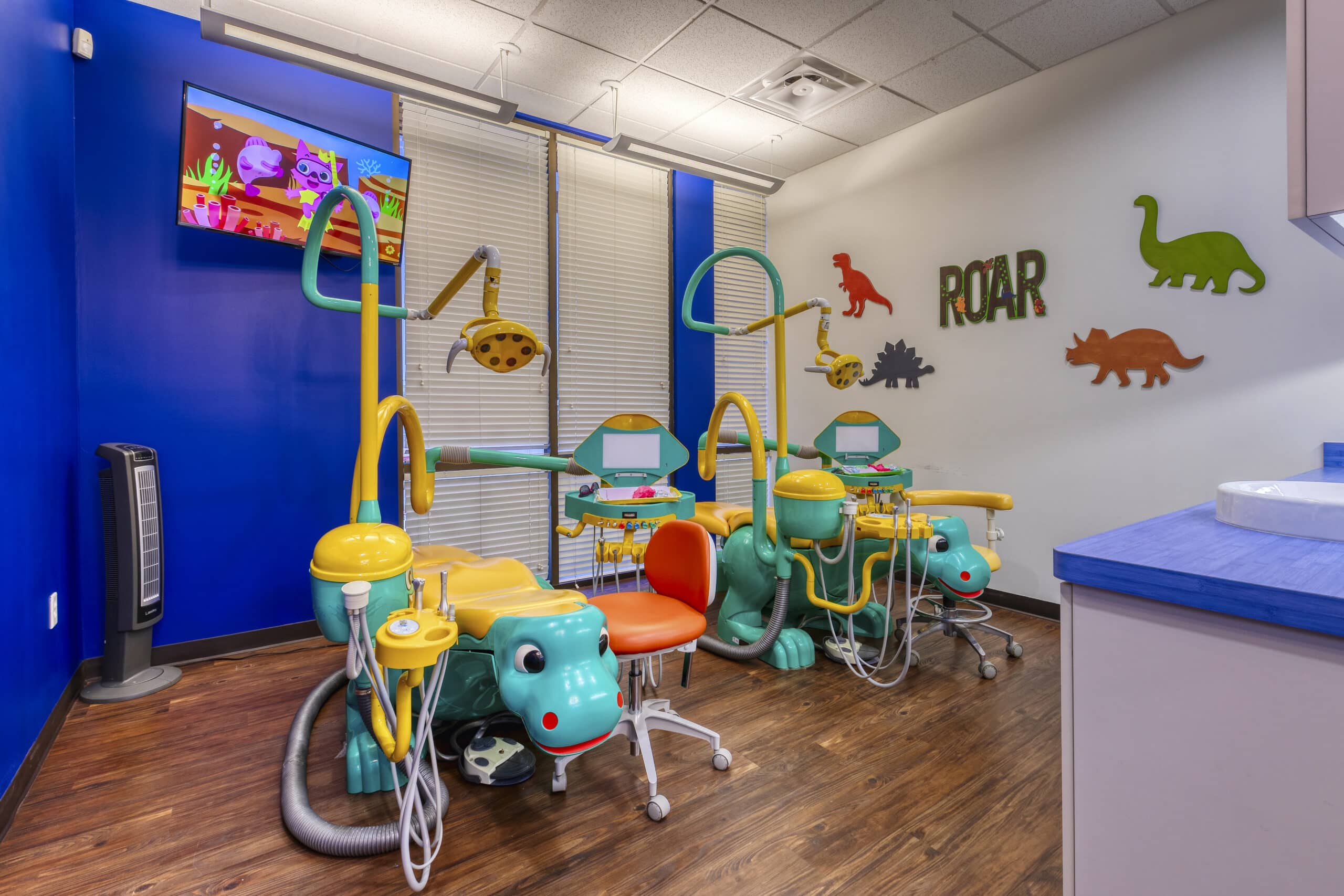Comprehending Common Oral Procedures: What Your Dentist Can Do for You
Many individuals are uninformed of the various dental treatments available to them. Recognizing these treatments can substantially influence oral wellness and general health. From regular cleanings to a lot more complicated therapies like origin canals, each service plays a crucial duty. People frequently neglect the relevance of expert guidance in these issues. What details procedures could boost your smile and resolve your distinct dental needs? Checking out these options might disclose unexpected options.
Regular Oral Cleansings
Routine dental cleanings are essential for keeping perfect oral wellness. These preventative consultations, generally suggested every six months, aid eliminate plaque and tartar accumulation that normal cleaning and flossing might miss out on. During a cleansing, an oral hygienist employs specialized devices to meticulously tidy teeth, guaranteeing that both noticeable surface areas and hard-to-reach areas are attended to.
This process not just promotes healthier periodontals yet also reduces the threat of cavities and periodontal disease. Following the cleansing, a thorough evaluation by the dental professional may determine very early indicators of prospective concerns. Fluoride treatments are typically applied post-cleaning to strengthen enamel and safeguard against degeneration.
Clients may additionally obtain personalized recommendations on improving oral hygiene behaviors. Generally, regular dental cleanings play a considerable duty in stopping dental issues and keeping a bright, healthy and balanced smile, strengthening the value of normal sees to the dental professional.
Dental fillings for Cavities
Fillings for tooth cavities are a typical oral treatment focused on fixing tooth decay. Different loading products, such as amalgam, composite material, and gold, use different benefits and considerations. Recognizing the filling procedure and proper aftercare can assist people keep their oral wellness successfully.
Kinds of Filling Up Materials

Loading Procedure Summary
A cavity filling treatment usually includes a number of essential actions to ensure reliable therapy and individual comfort. The dental practitioner will analyze the afflicted tooth and might take X-rays to analyze the degree of decay. Next off, regional anesthetic is provided to numb the location, making sure the person really feels minimal pain during the treatment. The dental practitioner then utilizes specific devices to eliminate the decayed part of the tooth, cleansing the cavity extensively. Later, the chosen filling up product is positioned, shaped, and polished to bring back the tooth's function and look. The dental expert supplies instructions for post-treatment treatment and might arrange a follow-up visit to monitor the dental filling. This treatment helps prevent further decay and maintains oral health.
Aftercare and Maintenance Tips
Complying with the filling up treatment, correct aftercare and upkeep are essential for making sure the long life of the dental filling and the wellness of the tooth. People need to prevent eating sticky or tough foods for a minimum of 24 hr to allow the loading to set appropriately. Keeping excellent dental hygiene is essential; cleaning two times daily and flossing consistently will help protect against future degeneration. It is advisable to use a soft-bristle toothbrush to stay clear of irritating the dental filling. In addition, regular oral exams are essential, as dental professionals can check the filling's problem and deal with any kind of emerging issues. They ought to consult their dentist without delay to avoid problems if people experience level of sensitivity or pain. Abiding by these guidelines can considerably enhance the durability of dental fillings.
Root Canal Therapy
Root canal therapy is a common procedure made to conserve a tooth that is drastically rotted or infected. Throughout this procedure, a dentist eliminates the contaminated pulp from the tooth's inside, which alleviates discomfort and protects against further infection. After cleansing and sanitizing the hollow room, the dental expert fills it with a biocompatible product to seal the area. This treatment frequently requires one or two visits, depending on the extent of the tooth and the infection's problem.
Post-treatment, individuals might experience moderate pain, which is generally manageable with over the counter discomfort reducers. Correct oral health, including normal cleaning and flossing, is necessary for maintaining the health and wellness of the dealt with tooth. In a lot of cases, a crown may be positioned on the tooth to recover its strength and performance. Origin canal therapy successfully maintains all-natural teeth, adding to general dental health and wellness and protecting against much more substantial procedures in the future.
Tooth Extractions

Factors for Tooth Extraction
Oral extractions are an usual procedure in modern-day dental care, frequently needed by numerous underlying problems. One main factor for removal is severe dental cavity that endangers the stability of the tooth beyond repair service. Gum tissue illness can likewise bring about tooth mobility, triggering the requirement for removal to stop additional issues. In addition, overcrowding in the mouth might require the elimination of teeth to assist in positioning, specifically before orthodontic treatment. Affected wisdom teeth often call for removal to relieve discomfort and stop infection. Sometimes, extraction is needed for teeth that have actually endured stressful injury or fractures. Eventually, the decision for extraction is made to ensure overall dental health and wellness and protect against difficulties that can affect surrounding teeth and cells.
The Removal Refine
When a tooth removal is deemed required, the procedure usually begins with a complete examination by the dentist. This evaluation includes evaluating the individual's case history and conducting an oral evaluation, commonly come with by X-rays to identify the tooth's problem and its origins' framework. As soon as the assessment is full, the dental professional will certainly describe the treatment, including Your Domain Name anesthetic options to guarantee the person's comfort. The removal might be executed utilizing either an easy method for noticeable teeth or a medical approach for influenced teeth. After the tooth is removed, the dentist will offer instructions pertaining to immediate care and deal with any potential problems. This mindful technique assists to assure a smooth removal procedure and advertises excellent recovery.
Post-Extraction Care Tips
After a tooth removal, appropriate treatment is vital for facilitating healing and reducing pain. Clients should bite down delicately on a gauze pad for a minimum of half an hour to control bleeding and advertise embolisms formation. Ice packs can be related to the beyond the face to lower swelling during the first 24-hour. It is advisable to prevent laborious tasks and to keep the head boosted to lessen swelling. Soft foods must be consumed, and hot, spicy, or hard foods should be stayed clear of for several days. Preserving dental hygiene is important; however, people need to avoid washing their mouths strongly for the first 1 day. Adhering to these guidelines can substantially enhance recuperation and comfort after a tooth extraction.
Oral Crowns and Bridges
Although several people might not realize it, bridges and crowns are crucial components in corrective dentistry that aid bring back both feature and aesthetics to damaged or missing teeth. Crowns, typically described as caps, enclose a harmed tooth to provide stamina and boost its appearance. They are typically made from products such as porcelain, steel, or a combination of both, making sure longevity and a natural look.
Bridges, on the various other hand, are utilized to replace several missing out on teeth by anchoring synthetic teeth to adjacent healthy and balanced teeth. This not only fills the gap however likewise prevents nearby teeth from changing, maintaining correct alignment. Both procedures call for careful planning and accurate implementation by dental specialists, making certain optimal results. Patients can anticipate improved dental function and improved smiles, making crowns and bridges crucial options for those looking for corrective oral remedies.
Teeth Bleaching Options
Restorative dentistry not only focuses on repairing damaged teeth yet additionally on improving the general look of smiles, which brings teeth bleaching choices into factor to consider (Teeth Whitening). Dental practitioners use numerous methods to accomplish a brighter smile, consisting of at-home kits and in-office therapies
In-office whitening utilizes high-concentration whitening agents, try this website often turned on by light, providing instant outcomes. This technique is managed by a dental specialist, ensuring safety and efficiency. Conversely, at-home sets generally consist of lower concentrations of lightening representatives and need regular usage over a period of time for visible outcomes.
Additionally, dental practitioners may supply customized trays for home applications, permitting for an extra customized technique. It is crucial for individuals to speak with their dental practitioner to establish one of the most suitable choice based on their dental history and individual choices (Teeth Cleaning). Ultimately, teeth lightening can significantly enhance appearances, boosting self-confidence and total complete satisfaction with one's smile
Regularly Asked Concerns
Just how Commonly Should I Visit the Dentist for Routine Check-Ups?
Most dental specialists recommend going to the dental professional for routine check-ups every six months. This regularity assists to keep dental wellness, enabling very early detection of prospective concerns and prompt preventative like prevent even more serious issues.
What Are the Indications I Need an Oral Treatment?
Indicators showing the need for a dental procedure consist of relentless tooth discomfort, level of sensitivity to cool or warm, visible cavities, inflamed gums, foul-smelling breath, and problem chewing. Trigger interest can stop additional issues and ensure oral wellness.
Can Dental Procedures Be Done on Children?
Yes, oral procedures can be executed on children. Dental practitioners are trained to deal with pediatric cases, making sure that treatments are secure and appropriate for a child's age and dental advancement, dealing with both preventive and corrective needs efficiently.
Are Dental Procedures Uncomfortable, and Exactly How Is Discomfort Managed?
Dental treatments can trigger pain, yet discomfort administration strategies, such as regional anesthetic, sedation, and post-operative treatment, are employed to ensure individual comfort. The majority of individuals report workable levels of discomfort throughout and after therapy.
What Should I Expect During My Very First Oral Visit?
Throughout the first oral browse through, clients can anticipate a comprehensive examination, consisting of medical background testimonial, dental X-rays, and a discussion of dental health and wellness. The dental practitioner will certainly analyze demands and detail potential treatment alternatives moving on.
Tooth extractions are an usual dental procedure carried out for various factors, such as serious decay or congestion. One main reason for extraction is serious tooth degeneration that jeopardizes the integrity of the tooth past fixing. The extraction might be carried out utilizing either a simple technique for visible teeth or a medical approach for influenced teeth. Bridges, on the various other hand, are utilized to replace one or even more missing out on teeth by securing fabricated teeth to adjacent healthy and balanced teeth. Corrective dental care not only concentrates on repairing damaged teeth but also on improving the overall appearance of smiles, which brings teeth lightening options into factor to consider.